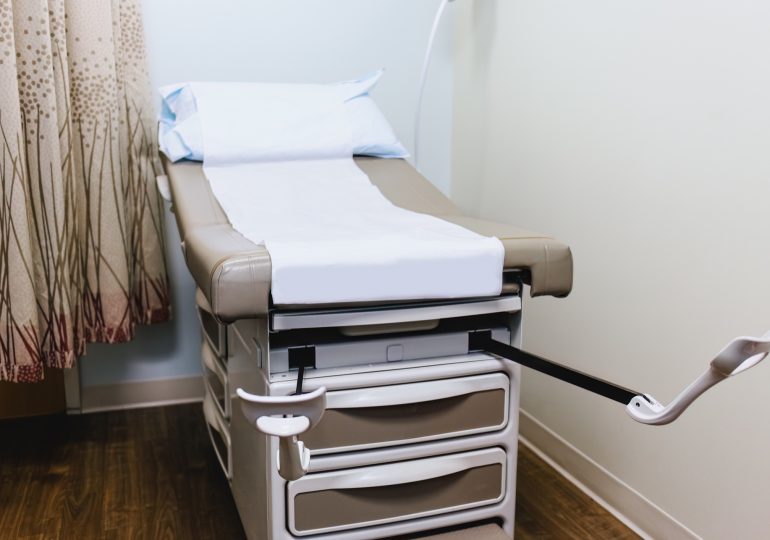On April 1, the Department of Health and Human Services released a letter to the nation’s teaching hospitals and medical schools to “reiterate and provide clarity” about the need for written, informed consent before “sensitive and intimate examinations” such as breast, pelvic, prostate, and rectal examinations, as part of medical training. Any institutions that do not comply with such rules could lose Medicare funding.
Regulation of the pelvic exam is long overdue. How medical trainees learn to perform it is crucial, because of the intimacy of the procedure. Ever since the development of the speculum in the mid-19th century, doctors have expressed concern and discomfort over the implications of peering into a woman’s vagina, including the alleged “father of American gynecology,” James Marion Sims, who developed the “Sims speculum” while performing countless surgeries on enslaved women.
[time-brightcove not-tgx=”true”]
Nonetheless, the speculum triumphed, ultimately giving men more medical power and authority over women patients, who frequently had little or no power to consent along the way.
The rise of the pelvic exam coincided with the emergence of gynecology as a medical profession in the mid-19th century. Initially, figures like Sims used the speculum—which offered unprecedented medical insights into the female body—with hesitation. Indeed, Sims made it perfectly clear that he was not in any way enthused at the thought of peering into women’s vaginas. This would be scandalous. Significantly, he noted that “if there was anything I hated, it was investigating the organs of the pelvis,” in his memoir. Sims and other 19th-century doctors recognized that to convince respectable white middle-class women of the necessity of using the speculum, they had to tread carefully.
Read More: The New Pelvic Exam Guideline Gives Women More Tough Decisions
But by the end of the century, such hesitation was no longer necessary. Obstetricians and gynecologists now embraced the speculum, along with other gynecological instruments such as forceps, as tools of their trade and a way to differentiate medical men from midwives. For example, Dr. A.F.A. King, professor of obstetrics at Columbian University, pointed out in his 1895 obstetrics textbook that a vaginal exam, while rarely needed, was necessary to determine whether a woman was in labor.
Notably, he assured male medical students that it was not necessary to “obtain verbal consent of the patient before instituting the examination.” Do not worry about explaining your actions, he urged. Consent was unnecessary, he claimed; it was the physician’s right and duty to penetrate a vagina just as it was to take a pulse. This dismissal of consent became cemented in 19th-century medical textbooks and proved difficult to dislodge. Perfecting a pelvic exam required practice without protest—which meant that unconscious patients became ideal candidates in the 20th century.
In the 1970s, women’s health activists first drew attention to this problem and directly linked it to sexism; 93% of all ob-gyns were male at the time, and were patronizing and dismissive of women’s complaints. One solution was to bring more women into medicine, as quotas were finally eliminated.
And yet, increasing the number of female students did not immediately transform medical education or training, nor did professional organizations recommend against the practice without consent. When a 1983 study found that 23% of U.S. and Canadian schools reported using anesthetized patients to teach the pelvic exam, the following year the Joint Committee on the Accreditation of Hospitals declared that patient participation in clinical training programs “should be voluntary.”
Despite this, the numbers of pelvic exams performed without consent, frequently on women under anesthesia, only increased; by 1990, that percentage was up to 37%.
By 2011, Shawn Barnes, a third-year medical student at the University of Hawaii medical school, was shocked after doing his ob-gyn rotation, where he was asked to perform pelvic exams on anesthetized women, without specific consent, “solely for the purpose of my education.” His attending physicians told him it was “considered standard procedure,” however.
Barnes joined a growing number of increasingly vocal medical students who were alarmed by the practice and the message it sent to medical students dismissing the importance of consent.
Yet the practice, though decreasing, still continues, even though most regulatory institutions either recommend against it or explicitly forbid it. In 2022, the Hastings Center published the first national survey to determine the frequency of the practice in the U.S. 1.4% of respondents answered in the affirmative. This translates to as many as 3.6 million patients in the U.S. potentially receiving such exams; and of course, since the practice is done without patient knowledge or consent, the numbers could be much higher.
Read More: The Abortion Fight Isn’t a ‘War on Women.’ It’s a War on Poor Women
What is even more disturbing is the racial bias exposed by the survey; Black respondents were four times as likely to report having had an “unconsented intimate examination.” Given that this practice takes place in teaching hospitals, it “disproportionately impacts poor and ‘public’ patients, many of whom are uninsured or minorities.” Just as enslaved women were at James Marion Sims’ disposal in the mid-19th century, black women’s bodies today remain more vulnerable to medical exploitation.
As a result, assumptions about consent as unnecessary have persisted and are at the core of the sexual abuses that continue around the pelvic exam today. Without clear guidelines, such as those just issued by the Department of Health and Human Services, and without a common language to articulate what should be going on during a pelvic exam, it makes it harder to identify what shouldn’t.
Even patients lack an understanding of the purpose of the pelvic exam. In a 2017 study, for example, half of patients surveyed could not answer the question, “do you know why this examination is performed” directly after receiving one. This only adds to the confusion and misunderstanding when abuse occurs.
And abuse in recent years occurs all too frequently. The past decade has seen a staggering number of sex abuse cases involving physicians, many of whom abused students, athletes, and patients for decades.
Read More: What True Justice Looks Like for Sexual Violence Survivors
In 2013, for example, Dr. Nikita Levy, a gynecologist at Johns Hopkins East Baltimore Medical Center, was caught secretly photographing his patients’ vaginas while performing pelvic exams, sometimes without wearing gloves, in a case that involved over 8,000 patients. Dr. Larry Nassar, the former doctor for the U.S. women’s gymnastics team, was sentenced to up to 175 years in prison in 2018 after 250 women accused him of sexual assault during alleged medical treatment. And as recently as 2023, 245 patients of Dr. Robert Hadden, a gynecologist employed by Columbia University Medical Center, allege that they were sexually assaulted by him during gynecological exams.
Of course, these cases are not representative of the medical professionals who routinely perform pelvic exams, but their stories serve as a warning of how easy it is for pelvic violence to happen under the façade of medical treatment.
When done carefully and respectfully, the pelvic exam remains a valuable, if contested, aspect of reproductive healthcare. The April 1 decision by HHS to require consent for a pelvic exam, particularly on unconscious women, for medical training purposes rather than for the patient’s benefit, makes it abundantly clear that this is not just a problem of the nineteenth century; it’s a problem right now.
Wendy Kline, Ph.D., is the Dema G. Seelye Chair in the History of Medicine at Purdue University. Her most recent book, Exposed: The Hidden History of the Pelvic Exam, is due out with Polity Press in September 2024.
Made by History takes readers beyond the headlines with articles written and edited by professional historians. Learn more about Made by History at TIME here. Opinions expressed do not necessarily reflect the views of TIME editors.
Leave a comment







